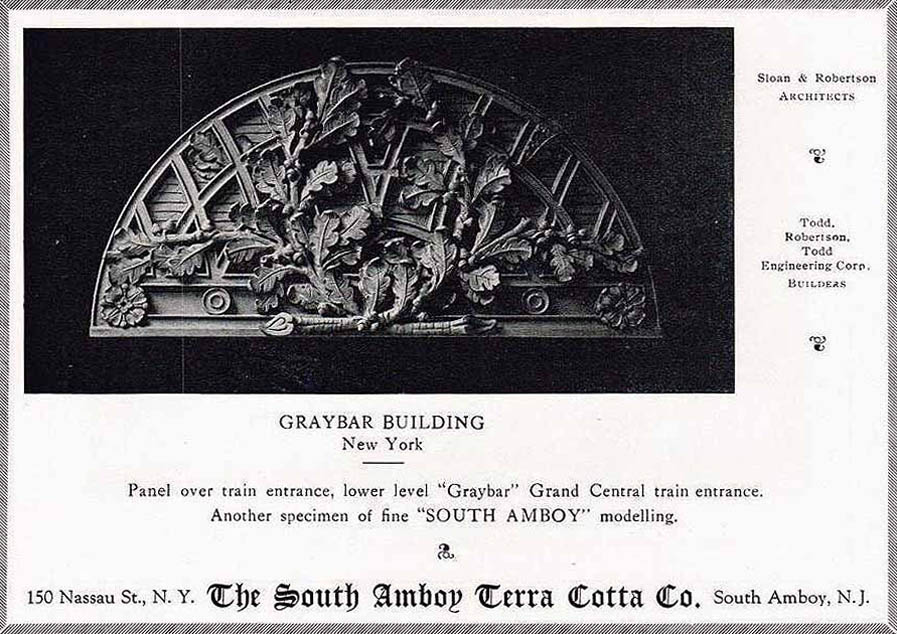South Amboy Terra Cotta in the Big City
In the early part of the 20th Century, South Amboy and the surrounding area was known for their clay derived products such as brick, pottery, and terra cotta. Sayreville had the massive Sayre and Fisher Brick Company along the south bank of the Raritan River and one of South Amboy’s gems was the South Amboy Terra Cotta company. The products from both companies were shipped out of the area to many locations either via water or railroad. Both of their locations were perfect as they had both the clay and the transportation capability in the same location.
In present day terms, the South Amboy Terra Cotta Company was located in what is now new housing between John T. O’Leary Blvd (previously Louisa Street) and Casey Road (previously Portia Street) just west of Broadway and the railroad tracks. The Venetian Care & Rehabilitation Center is across the street to the north of the property on land which used to store finished terra cotta. The YMCA is across the street on the south east side. Images of South Amboy Terra Cotta, and some history of both the industry and South Amboy Terra Cotta specifically, can be found at this 2003 Chipstone site and this 2005 Chipstone site.
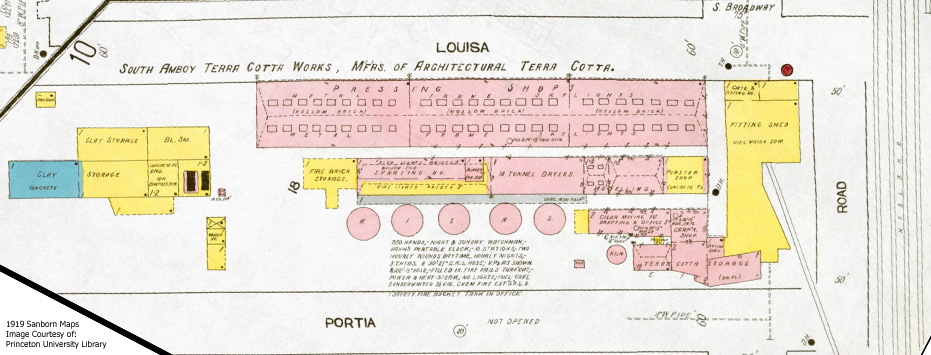
1919 Sanborn Fire Insurance Map of South Amboy showing Location of and Buildings Composing the South Amboy Terra Cotta Company. Map courtesy of Princeton University Library.
The advertisement at the top of this page is from a periodical from the early part of the 20th century – most likely from a trade periodical. It shows a Terra Cotta design from the South Amboy Terra Cotta Company which was used in some seemingly obscure building in New York City by the name of “Graybar”. Googling “Graybar” shows that the building, located at 420 Lexington Ave, was completed in 1927, is 31 stories tall, 1.5 million-square-feet, and was named for its major tenant at the time, Graybar Electric Company. The Graybar building provides public entrances for the very famous building it abuts to and hovers over. While the street entrance into the Graybar building has some interesting sculptures, the terra cotta design featured above is not located there.
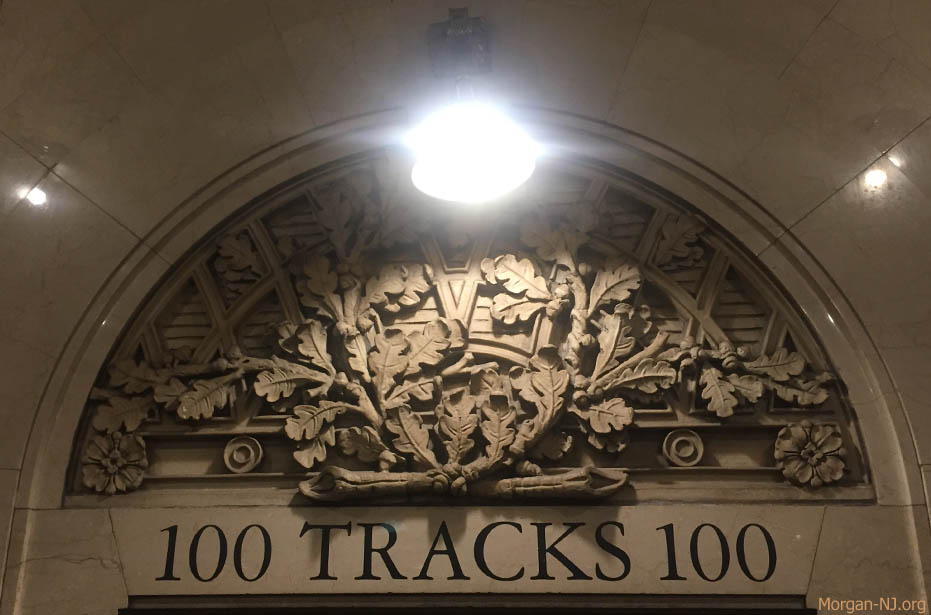
Terra Cotta Artwork Over the Entryway to Track 100 on the Lower Level of Grand Central Terminal Created at South Amboy Terra Cotta in the early 20th Century.
Entering into the Graybar Building at the 420 Lexington Avenue entrance will ultimately take the visitor into Grand Central Terminal (technically it isn’t “Grand Central Station”). After some additional searching, the visitor will find not just one instance of this artwork, but one over each of the doors on the lower level entrances to the trains!
If you take a train from Grand Central Terminal, you will have to walk under one of designs in order to get to the tracks.
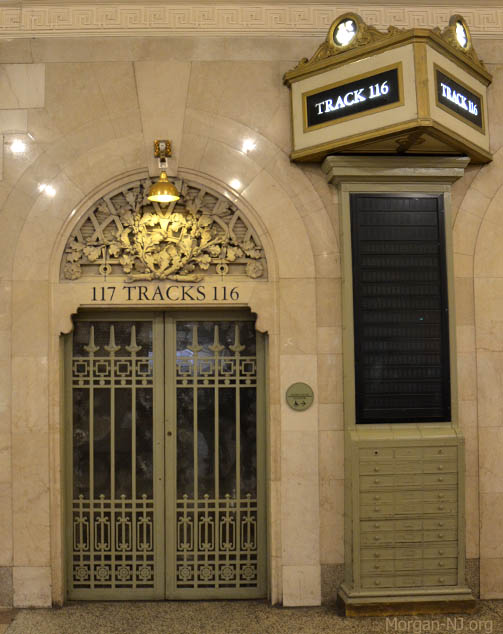
Entryway to Tracks 116 & 117 on the Lower Level of Grand Central Terminal with early 20th Century Terra Cotta Artwork Created at South Amboy Terra Cotta.
The property between Louisia Street and Portia Street west of Broadway in South Amboy had long been home to pottery companies.
Swan Hill Pottery was established at this site in 1849. The Swan Hill Pottery buildings are shown on the April 1886 Sanborn Fire Insurance Map (Sheet 6). On 18 October 1889, Swan Hill Pottery was reorganized into the South Amboy Pottery Company. The October 1891 Sanborn Fire Insurance Map (Sheet 6) shows the South Amboy Pottery Company at this location.
In May 1903, the buildings and facilities, occupying these approximately three city blocks, were leased to the South Amboy Terra Cotta Company then sold to this same company three years later (see the Chipstone article links, above). The final dissolution of the South Amboy Pottery Company as a corporate entity took place on 11 Oct 1906. The 1908 Sanborn Fire Insurance Map (Sheet 10) shows the South Amboy Terra Cotta Works at this location.
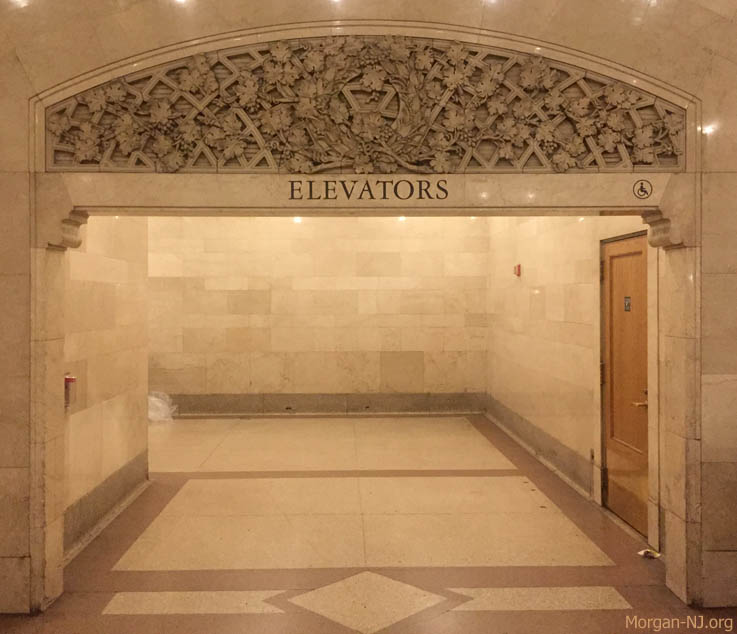
Decorative Terra Cotta over the Entrance to the Elevators on the Lower Level of Grand Central Terminal.
On January 1, 1918, the South Amboy Terra Cotta Company retained its name when it was merged with nearby New Jersey Terra Cotta (then located on Catherine Street bordering the Central Railroad of New Jersey – now NJ Transit), under the name Seaboard Clay Manufacturing Co. The March 1919 Sanborn Fire Insurance Map (Sheet 4) shows the South Amboy Terra Cotta at this location.
According to Richard Veit’s, “Beyond the Factory Gates: The Industrial Archaeology of New Jersey’s Terra Cotta Industry”, South Amboy Terra Cotta Company closed in 1928.
The site Historic Aerials shows the buildings making up the South Amboy Terra Cotta Company, including the six or so massive kilns, were still standing as of 1954. Gradually all of the structures disappeared over the subsequent years.
It isn’t clear where any of the records from the South Amboy Terra Cotta company might be located now, if they exist at all, so determining what still existing buildings display terra cotta manufactured by South Amboy Terra Cotta is hit and miss. Mostly miss.
Originally posted on June 2, 2018.
